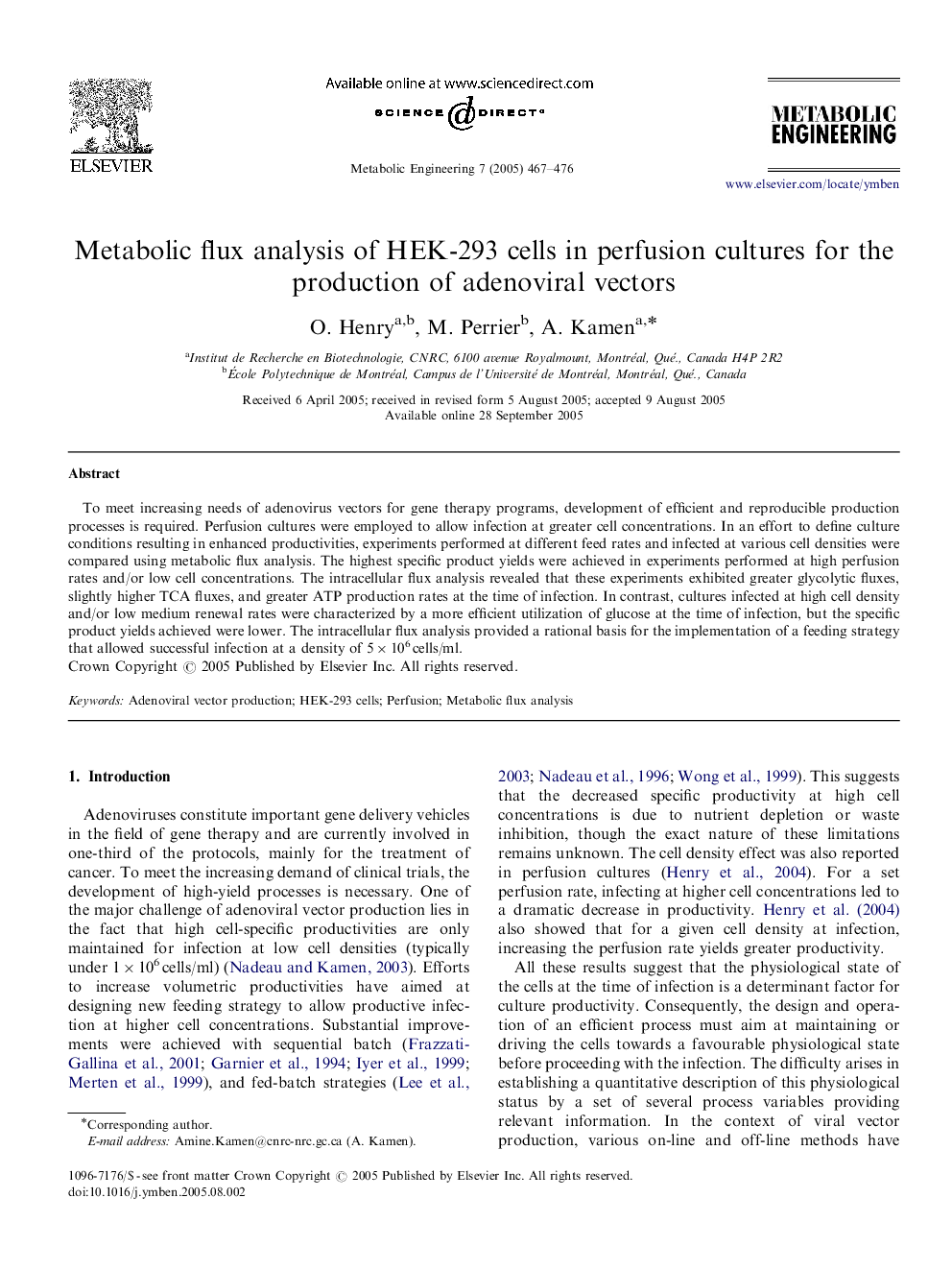| Article ID | Journal | Published Year | Pages | File Type |
|---|---|---|---|---|
| 9607657 | Metabolic Engineering | 2005 | 10 Pages |
Abstract
To meet increasing needs of adenovirus vectors for gene therapy programs, development of efficient and reproducible production processes is required. Perfusion cultures were employed to allow infection at greater cell concentrations. In an effort to define culture conditions resulting in enhanced productivities, experiments performed at different feed rates and infected at various cell densities were compared using metabolic flux analysis. The highest specific product yields were achieved in experiments performed at high perfusion rates and/or low cell concentrations. The intracellular flux analysis revealed that these experiments exhibited greater glycolytic fluxes, slightly higher TCA fluxes, and greater ATP production rates at the time of infection. In contrast, cultures infected at high cell density and/or low medium renewal rates were characterized by a more efficient utilization of glucose at the time of infection, but the specific product yields achieved were lower. The intracellular flux analysis provided a rational basis for the implementation of a feeding strategy that allowed successful infection at a density of 5Ã106Â cells/ml.
Related Topics
Physical Sciences and Engineering
Chemical Engineering
Bioengineering
Authors
O. Henry, M. Perrier, A. Kamen,
